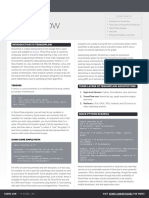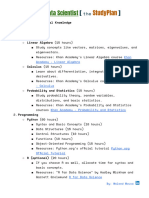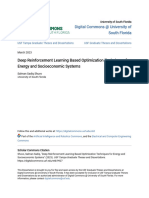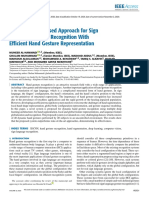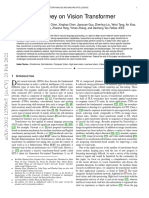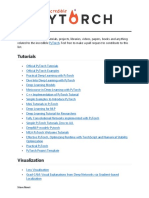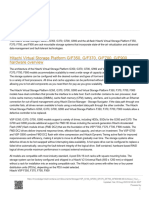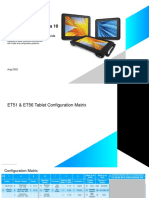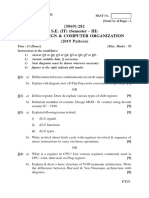2/20/2020 Install TensorFlow with pip | TensorFlow
Install TensorFlow with pip
TensorFlow 2 packages are available
tensorflow —Latest stable release with CPU and GPU support (https://www.tensor ow.org/install/gpu) (Ubuntu and Windows)
tf-nightly —Preview build (unstable). Ubuntu and Windows include GPU support (https://www.tensor ow.org/install/gpu).
Older versions of TensorFlow
For TensorFlow 1.x, CPU and GPU packages are separate:
tensorflow==1.15 —Release for CPU-only
tensorflow-gpu==1.15 —Release with GPU support (https://www.tensor ow.org/install/gpu) (Ubuntu and Windows)
System requirements
Python 3.5–3.7
pip 19.0 or later (requires manylinux2010 support)
Ubuntu 16.04 or later (64-bit)
macOS 10.12.6 (Sierra) or later (64-bit) (no GPU support)
Windows 7 or later (64-bit) (Python 3 only)
Raspbian 9.0 or later
GPU support (https://www.tensor ow.org/install/gpu) requires a CUDA®-enabled card (Ubuntu and Windows)
Installing TensorFlow 2 requires a newer version of pip.
Hardware requirements
Starting with TensorFlow 1.6, binaries use AVX instructions (https://en.wikipedia.org/wiki/Advanced_Vector_Extensions#CPUs_with_AVX)
which may not run on older CPUs.
Read the GPU support guide (https://www.tensor ow.org/install/gpu) to set up a CUDA®-enabled GPU card on Ubuntu or Windows.
1. Install the Python development environment on your system
ed
Python 3 Python 2.7
Check if your Python environment is already con gured:
es Python 3.5–3.7 and pip >= 19.0
thon3 --version
p3 --version
rtualenv --version
If these packages are already installed, skip to the next step.
Otherwise, install Python (https://www.python.org/), the pip package manager (https://pip.pypa.io/en/stable/installing/), and Virtualenv
(https://virtualenv.pypa.io/en/stable/):
Ubuntumac OS (#mac-os)Windows (#windows)Raspberry Pi (#raspberry-pi)Other (#other)
https://www.tensorflow.org/install/pip 1/3
�2/20/2020 Install TensorFlow with pip | TensorFlow
$ sudo apt update
$ sudo apt install python3-dev python3-pip
$ sudo pip3 install -U virtualenv # system-wide install
on: Upgrading the system pip can cause problems (https://github.com/pypa/pip/issues/5599).
n a virtual environment, use python3 -m pip for the commands below. This ensures that you upgrade and use the Python pip instead of the system pip.
2. Create a vi ual environment (recommended)
Python virtual environments are used to isolate package installation from the system.
Ubuntu / mac OSWindows (#windows)Conda (#conda)
( )
Create a new virtual environment by choosing a Python interpreter and making a ./venv directory to hold it:
$ virtualenv --system-site-packages -p python3 ./venv
Activate the virtual environment using a shell-speci c command:
$ source ./venv/bin/activate # sh, bash, ksh, or zsh
When virtualenv is active, your shell prompt is pre xed with (venv).
Install packages within a virtual environment without affecting the host system setup. Start by upgrading pip:
(venv) $ pip install --upgrade pip
(venv) $ pip list # show packages installed within the virtual environment
And to exit virtualenv later:
(venv) $ deactivate # don't exit until you're done using TensorFlow
3. Install the TensorFlow pip package
Choose one of the following TensorFlow packages to install from PyPI (https://pypi.org/project/tensor ow/):
tensorflow —Latest stable release with CPU and GPU support (https://www.tensor ow.org/install/gpu) (Ubuntu and Windows).
tf-nightly —Preview build (unstable). Ubuntu and Windows include GPU support (https://www.tensor ow.org/install/gpu).
tensorflow==1.15 —The nal version of TensorFlow 1.x.
ge dependencies are automatically installed. These are listed in the setup.py
s://github.com/tensor ow/tensor ow/blob/master/tensor ow/tools/pip_package/setup.py) le under REQUIRED_PACKAGES.
Vi ualenv installSystem install (#system-install)
( )
(venv) $ pip install --upgrade tensorflow
https://www.tensorflow.org/install/pip 2/3
�2/20/2020 Install TensorFlow with pip | TensorFlow
Verify the install:
(venv) $ python -c "import tensorflow as tf;print(tf.reduce_sum(tf.random.normal([1000, 1000])))"
ss: TensorFlow is now installed. Read the tutorials (https://www.tensor ow.org/tutorials) to get started.
Package location
A few installation mechanisms require the URL of the TensorFlow Python package. The value you specify depends on your Python version.
Version URL
Linux
Python 2.7 GPU support https://storage.googleapis.com/tensor ow/linux/gpu/tensor ow_gpu-2.1.0-cp27-cp27mu-manylinux2010_x86_64.whl
Python 2.7 CPU-only https://storage.googleapis.com/tensor ow/linux/cpu/tensor ow_cpu-2.1.0-cp27-cp27mu-manylinux2010_x86_64.whl
Python 3.5 GPU support https://storage.googleapis.com/tensor ow/linux/gpu/tensor ow_gpu-2.1.0-cp35-cp35m-manylinux2010_x86_64.whl
Python 3.5 CPU-only https://storage.googleapis.com/tensor ow/linux/cpu/tensor ow_cpu-2.1.0-cp35-cp35m-manylinux2010_x86_64.whl
Python 3.6 GPU support https://storage.googleapis.com/tensor ow/linux/gpu/tensor ow_gpu-2.1.0-cp36-cp36m-manylinux2010_x86_64.whl
Python 3.6 CPU-only https://storage.googleapis.com/tensor ow/linux/cpu/tensor ow_cpu-2.1.0-cp36-cp36m-manylinux2010_x86_64.whl
Python 3.7 GPU support https://storage.googleapis.com/tensor ow/linux/gpu/tensor ow_gpu-2.1.0-cp37-cp37m-manylinux2010_x86_64.whl
Python 3.7 CPU-only https://storage.googleapis.com/tensor ow/linux/cpu/tensor ow_cpu-2.1.0-cp37-cp37m-manylinux2010_x86_64.whl
macOS (CPU-only)
Python 2.7 https://storage.googleapis.com/tensor ow/mac/cpu/tensor ow-2.1.0-cp27-cp27m-macosx_10_9_x86_64.whl
Python 3.5 https://storage.googleapis.com/tensor ow/mac/cpu/tensor ow-2.1.0-cp35-cp35m-macosx_10_6_intel.whl
Python 3.6 https://storage.googleapis.com/tensor ow/mac/cpu/tensor ow-2.1.0-cp36-cp36m-macosx_10_9_x86_64.whl
Python 3.7 https://storage.googleapis.com/tensor ow/mac/cpu/tensor ow-2.1.0-cp37-cp37m-macosx_10_9_x86_64.whl
Windows
Python 3.5 GPU support https://storage.googleapis.com/tensor ow/windows/gpu/tensor ow_gpu-2.1.0-cp35-cp35m-win_amd64.whl
Python 3.5 CPU-only https://storage.googleapis.com/tensor ow/windows/cpu/tensor ow_cpu-2.1.0-cp35-cp35m-win_amd64.whl
Python 3.6 GPU support https://storage.googleapis.com/tensor ow/windows/gpu/tensor ow_gpu-2.1.0-cp36-cp36m-win_amd64.whl
Python 3.6 CPU-only https://storage.googleapis.com/tensor ow/windows/cpu/tensor ow_cpu-2.1.0-cp36-cp36m-win_amd64.whl
Python 3.7 GPU support https://storage.googleapis.com/tensor ow/windows/gpu/tensor ow_gpu-2.1.0-cp37-cp37m-win_amd64.whl
Python 3.7 CPU-only https://storage.googleapis.com/tensor ow/windows/cpu/tensor ow_cpu-2.1.0-cp37-cp37m-win_amd64.whl
Raspberry PI (CPU-only)
Python 3, Pi0 or Pi1 https://storage.googleapis.com/tensor ow/raspberrypi/tensor ow-2.1.0-cp35-none-linux_armv6l.whl
Python 3, Pi2 or Pi3 https://storage.googleapis.com/tensor ow/raspberrypi/tensor ow-2.1.0-cp35-none-linux_armv7l.whl
Except as otherwise noted, the content of this page is licensed under the Creative Commons Attribution 4.0 License (https://creativecommons.org/licenses/by/4.0/),
and code samples are licensed under the Apache 2.0 License (https://www.apache.org/licenses/LICENSE-2.0). For details, see the Google Developers Site Policies
(https://developers.google.com/site-policies). Java is a registered trademark of Oracle and/or its a liates.
Last updated 2020-02-10.
https://www.tensorflow.org/install/pip 3/3
